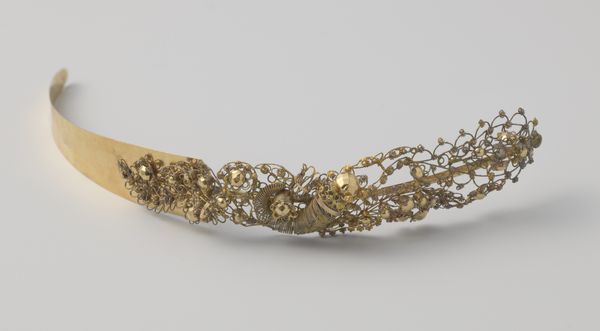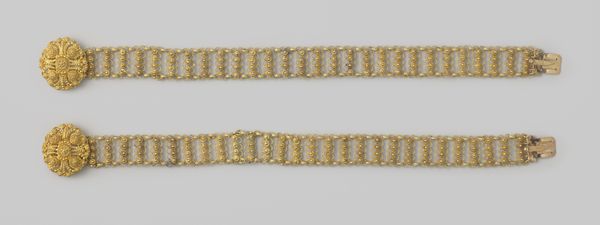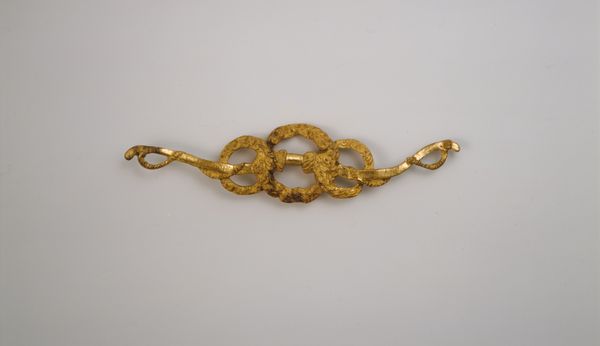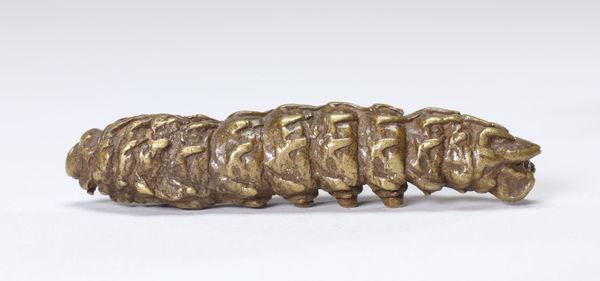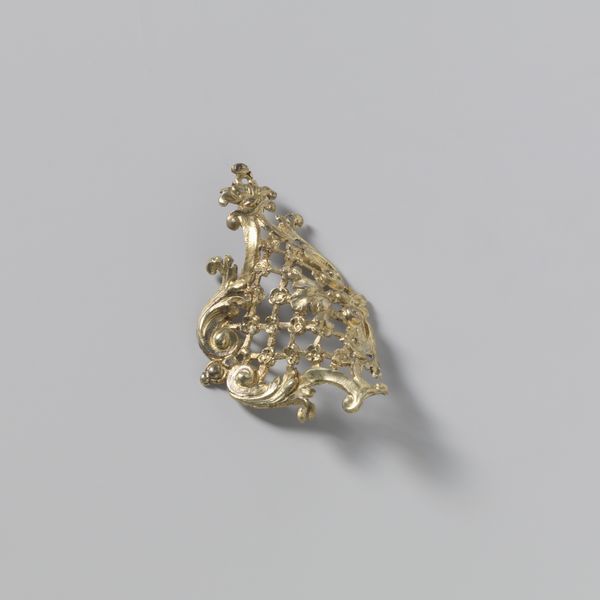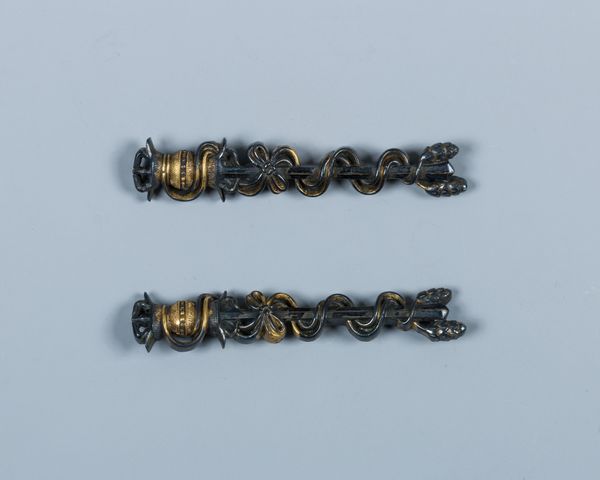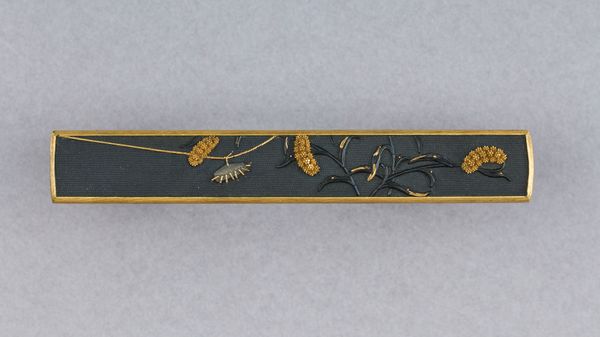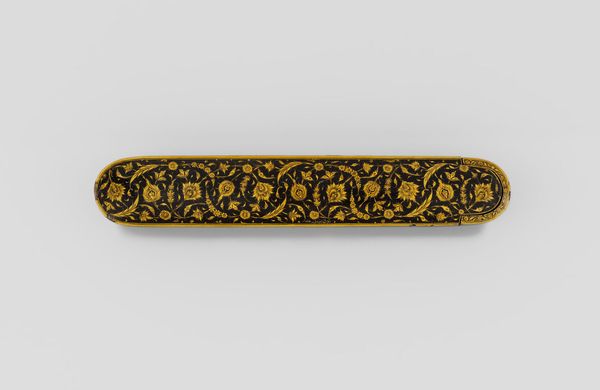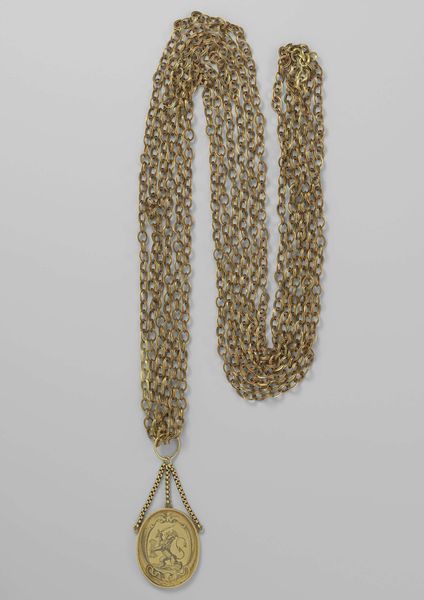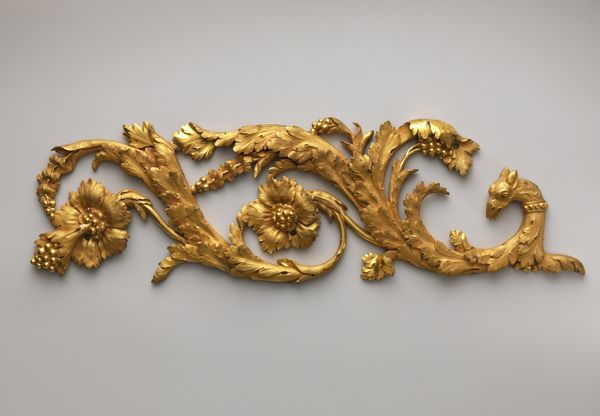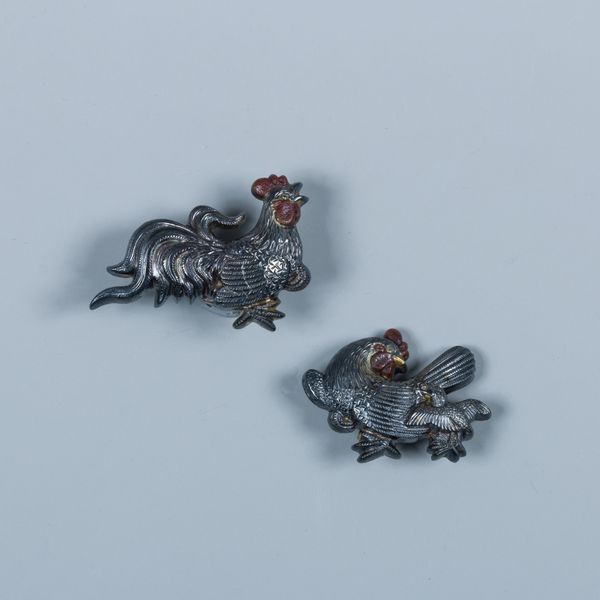
metal, gold, sculpture
#
metal
#
asian-art
#
gold
#
japan
#
sculptural image
#
sculpture
#
armor
#
sword
Dimensions: L. of grip ornament (a) 1 7/8 in. (4.8 cm); L. of grip ornament (b) 1 15/16 in. (4.9 cm)
Copyright: Public Domain
Curator: What an arresting pair! Intricately crafted and gleaming with gold, they strike me as symbols of fierce protection. Editor: Indeed! And speaking of context, these are Sword-Grip Ornaments, known as Menuki. They're attributed to Gotō Teijō, or Mitsumasa, dating back to the 17th century. Here at The Metropolitan Museum of Art, they give us insight into the culture of Japanese sword fittings. Curator: It’s interesting that such decorative objects also had functional purposes, no? They’d sit under the wrapping of the sword's handle to improve grip. But the iconography… it transcends mere practicality, wouldn’t you agree? Editor: Absolutely. We have two distinct scenes presented. One showcases a dragon among stylized flowers. The other appears to depict a tiger nestled amidst bamboo. Traditional symbols of power, nature and resilience, right? What about the way they were likely deployed and displayed on functional swords? What did it mean to adorn a weapon with such symbols, potentially used in a hierarchical political system like feudal Japan? Curator: Precisely. We're engaging with layers of identity, social position, and belief systems that are literally embodied within the structure of power itself. How do we unpack that relationship with conflict, then, given this historical distance? Are we looking at propaganda? Protection? A fusion of those categories? Editor: I'm more inclined to consider them indicators of status and taste for the samurai class. They acted as patrons and these luxurious materials demonstrated an elite socio-economic position. Think about it—the labor required to produce something this detailed would’ve been significant. That access speaks volumes. Curator: I see your point about the economics, but can we think, too, about who had the authority to display a dragon and who only had a tiger? Where are the working classes? How might a peasant respond to this? In thinking through our current moment, might it serve us to think more deeply about our contemporary “weaponry,” too, as reflections of wealth, gender and class? Editor: Yes, posing these questions that allow us to recognize how political economy dictates aesthetics is important. Examining the Menuki allows us to consider craftsmanship, status, and societal values expressed through ornamentation. Thank you, truly, for encouraging that interrogation.
Comments
No comments
Be the first to comment and join the conversation on the ultimate creative platform.
